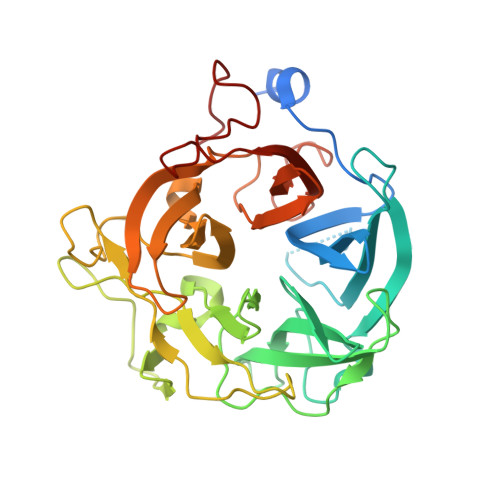Two distinct catalytic pathways for GH43 xylanolytic enzymes unveiled by X-ray and QM/MM simulations.
Morais, M.A.B., Coines, J., Domingues, M.N., Pirolla, R.A.S., Tonoli, C.C.C., Santos, C.R., Correa, J.B.L., Gozzo, F.C., Rovira, C., Murakami, M.T.(2021) Nat Commun 12: 367-367
- PubMed: 33446650
- DOI: https://doi.org/10.1038/s41467-020-20620-3
- Primary Citation of Related Structures:
6XN0, 6XN1, 6XN2 - PubMed Abstract:
Xylanolytic enzymes from glycoside hydrolase family 43 (GH43) are involved in the breakdown of hemicellulose, the second most abundant carbohydrate in plants. Here, we kinetically and mechanistically describe the non-reducing-end xylose-releasing exo-oligoxylanase activity and report the crystal structure of a native GH43 Michaelis complex with its substrate prior to hydrolysis. Two distinct calcium-stabilized conformations of the active site xylosyl unit are found, suggesting two alternative catalytic routes. These results are confirmed by QM/MM simulations that unveil the complete hydrolysis mechanism and identify two possible reaction pathways, involving different transition state conformations for the cleavage of xylooligosaccharides. Such catalytic conformational promiscuity in glycosidases is related to the open architecture of the active site and thus might be extended to other exo-acting enzymes. These findings expand the current general model of catalytic mechanism of glycosidases, a main reaction in nature, and impact on our understanding about their interaction with substrates and inhibitors.
- Brazilian Biorenewables National Laboratory (LNBR), Brazilian Center for Research in Energy and Materials (CNPEM), Campinas, 13083-100, Brazil.
Organizational Affiliation:



















